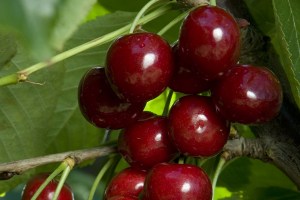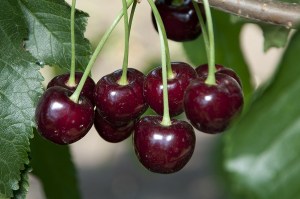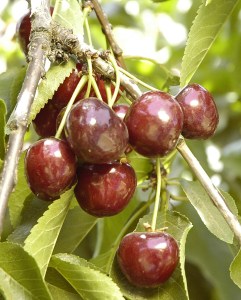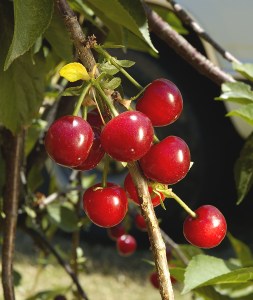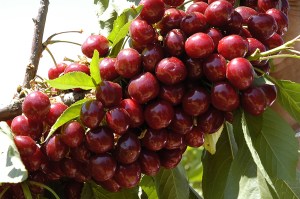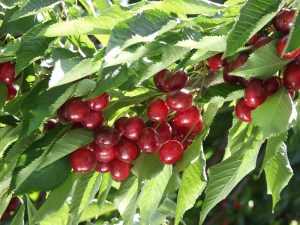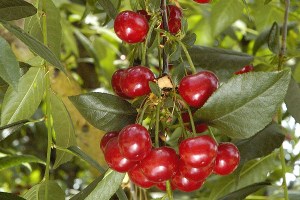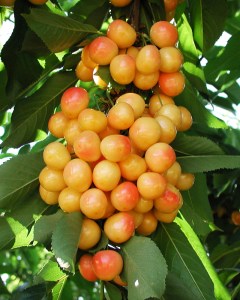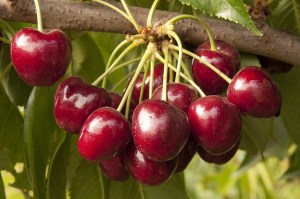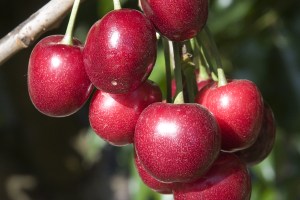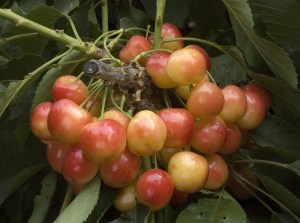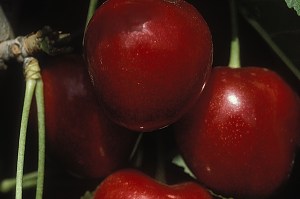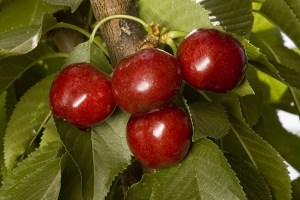Cherries
Bare Root Cherries
 Cherries are one of the most popular fruits in the nation. Breeders are constantly working to provide more varieties for warmer areas in the country. The varieties Lapins and Royal Rainier were the first of these offerings, with chill hours of 400 to 500, but the newest low chill cherries, Royal Crimson, Royal Lee and Minnie Royal, require only 200 to 300 chill hours. Will Florida be the next cherry capitol of the world? Stay tuned...
Cherries are one of the most popular fruits in the nation. Breeders are constantly working to provide more varieties for warmer areas in the country. The varieties Lapins and Royal Rainier were the first of these offerings, with chill hours of 400 to 500, but the newest low chill cherries, Royal Crimson, Royal Lee and Minnie Royal, require only 200 to 300 chill hours. Will Florida be the next cherry capitol of the world? Stay tuned...
Good drainage is one of the most important factors in cherry tree success. If your soil does not drain well and you have your heart set on growing cherry trees, consider constructing a raised bed. You can use lumber or railroad ties to enclose the bed and fill it with a good mix of top soil and soil amendment.
More About Cherries
 Just before those delicious red (or in the case of Rainier, yellow with a red blush) fruits are ready to harvest, the birds descend! If your cherry tree is very large, there may be enough to share. If not, you will most likely want to net the tree. We offer bird netting in our Orchard and Garden Supplies section. Another option is constructing a permanent net made of chicken wire. Make sure there is an opening for easy entry. You probably will want this type of structure in an unobtrusive spot.
Just before those delicious red (or in the case of Rainier, yellow with a red blush) fruits are ready to harvest, the birds descend! If your cherry tree is very large, there may be enough to share. If not, you will most likely want to net the tree. We offer bird netting in our Orchard and Garden Supplies section. Another option is constructing a permanent net made of chicken wire. Make sure there is an opening for easy entry. You probably will want this type of structure in an unobtrusive spot.
Before the Second World War, more than fifty varieties of sour cherries were grown, but now few are grown commercially. It seems they have been somewhat neglected in the breeding programs since sweet cherries are so much more popular. Sour cherry trees are usually smaller than sweet cherry trees and their branches are more twiggy. They are also more tolerant of heavy soils and will fruit on younger wood. Although they are usually grown as standards, they can be left as small bushes, making the harvesting and netting much easier. Dead, diseased and congested growth should be removed in spring or early summer. When harvesting the cherries, it is best to cut them off the tree. They bear on spurs for many years and there is a possibility the spurs will come off with the cherries.
Morello cherries freeze very well. They can be frozen without sugar and retain their flavor. Sour cherries make great pies, tarts, cakes and jams. Sweet cherries freeze better if the pits are removed. Wood of the sweet cherry is greatly prized by furniture makers and it is also an aromatic addition to your fireplace. The trees themselves add beauty to the landscape, especially when they are flowering. The white blossoms appear in clusters and the appearance is that of a tree covered in snow.
Eating cherries is one of summer's great delights. Who knew that something so delicious could be so good for you?
Cherry Rootstocks
MAHALEB (Mah.)
The most winter hardy of the commonly used cherry rootstocks. Resists crown gall, bacterial canker, some nematodes. Not tolerant of wet soils. Standard varieties slightly dwarfed to about 85% of their height on Mazzard, or about 25-35 ft. Can be held at any height with summer pruning. Induces early, heavy bearing.
MAXMA 14 (Max.)
Cherries are dwarfed to 2/3 of standard, about fifteen feet. Very precocious and productive. Extensive root system with good anchorage. Tolerant of wet soils. Resistant to nematodes, bacterial canker and iron chlorosis. Very little suckering.
MAZZARD (Mazz.)
Standard rootstock for sweet cherries; unpruned tree height of standard varieties is 30-40 ft.; trees may be held to any height with summer pruning. Vigorous, more tolerant of wet soils than Mahaleb, but good drainage still required. Resistant to root knot nematodes and oak root fungus. Well anchored. Relatively cold hardy.

